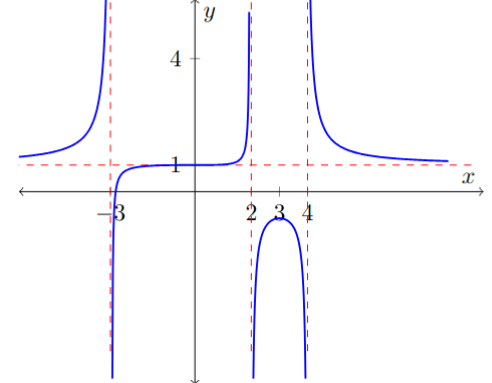More on Increasing, Decreasing, Critical Points, and Relative Extrema
Today’s plan
[greybox2]
- Critical Points
- Concavity Definition
- Inflection Points
- Second Derivative Test
[/greybox2]
Critical Points
We will complete the stuff we didn’t get to last time over on my notes for March 26th.
Concavity Definition
The definition that Dr. Browne gave you is an complicated one, so I want to give you one that is, in my opinion, more understandable. In class, I will demonstrate how to understand concavity using the the following Desmos link:
https://www.desmos.com/calculator/wuq7haiubz
[greybox2] Definition.
- $f(x)$ is concave up on an interval $(a, b)$ if all of the tangent lines to the curve are below the graph of $f(x)$.
- $f(x)$ is concave down on an interval $(a, b)$ if all of the tangents lines to the curve above the graph of $f(x)$. [/greybox2]
[greybox] WARNING: Concavity and increasing/decreasing have NOTHING to do with each other. Study the Desmos example above until you understand why this is true. [/greybox]
With this definition, one can show that we obtain the following fact:
[greybox2]
- If $f''(x) > 0$ on $(a, b)$, then $f(x)$ is concave up on $(a, b)$.
- If $f''(x) < 0$ on $(a, b)$, then $f(x)$ is concave down on $(a, b)$. [/greybox2]
Inflection Points
Recall that Dr. Browne gave you the following definition
[greybox2] Definition. Given that $f$ is continuous. We say that $x = c$ is an inflection point given
- $f(c)$ exists.
- $f’(c)$ exists.
- Concavity changes at $x = c$. [/greybox2]
The first two criterion that are given are generally unnecessary to check because the second derivative at a point certainly doesn’t exist if the function and/or its derivative don’t exist there either. So the MOST IMPORTANT THING TO REMEMBER about inflection points is the following:
[greybox2] If $f$ is continuous, then inflection points are where the concavity of $f$ changes. [/greybox2]
Second Derivative Test
[greybox2] Second Derivative Test. Suppose that $x = c$ is a critical point of $f(x)$ such that $f’(c) = 0$ and $f''(x)$ is continuous in a vicinity around $x = c$. Then,
- If $f''(c) < 0$, then $x = c$ is a relative maximum.
- If $f''(c) > 0$, then $x = c$ is a relative minimum.
- If $f''(c) = 0$, we don’t know anything. [/greybox2]
[greybox] Conceptual Question. We will not go over this example in lecture, but spend some time trying to understand the third point about the second derivative test by applying it to the function
\[\begin{align*} f(x) = x^3. \end{align*}\]What are is its critical point? What is $f''(x)$ equal to at that point? Is there a relative extrema there? [/greybox]
Lecture Problems
[greybox] Lecture Problem 1, Section 4.2. Let $f(x) = x^3 - 3x^2 - 10$. Find the intervals where $f$ is concave up and concave down and state the inflection point if one exists. [/greybox]
[solution]
- Concave down: $(-\infty, 1)$
- Concave up: $(1, \infty)$
- Inflection point: $x = 1$ [/solution]
[greybox] Lecture Problem 2, Section 4.2. Let $h(x) = x^4 - 6x^3 + x + 10$. Find the point(s) of inflection. [/greybox]
[solution]
- $x = 0$ and $x = 3$. [/solution]
[greybox] Lecture Problem 3, Section 4.2. Use the second derivative test to find the relative maximum and relative minimum of the function $f(x) = 3x^3 - 18x^2 + 6$. [/greybox]
[solution]
- Relative maximum: $6$
- Relative minimum: $-90$. [/solution]
[greybox] Lecture Problem 4, Section 4.2. The graph of $f(x)$ is given below. Give intervals where $f$ is increasing, decreasing, concave up, and concave down.
 [/greybox]
[/greybox]
[solution] $f$ is:
- Increasing on $(-\infty, -3) \cup (-3, 2) \cup (2, 3)$
- Decreasing on $(3, 4) \cup (4, \infty)$
- Concave up on $(-\infty, -3) \cup (0, 2), \cup (4, \infty)$
- Concave down on $(-3, 0) \cup (2, 4)$ [/solution]